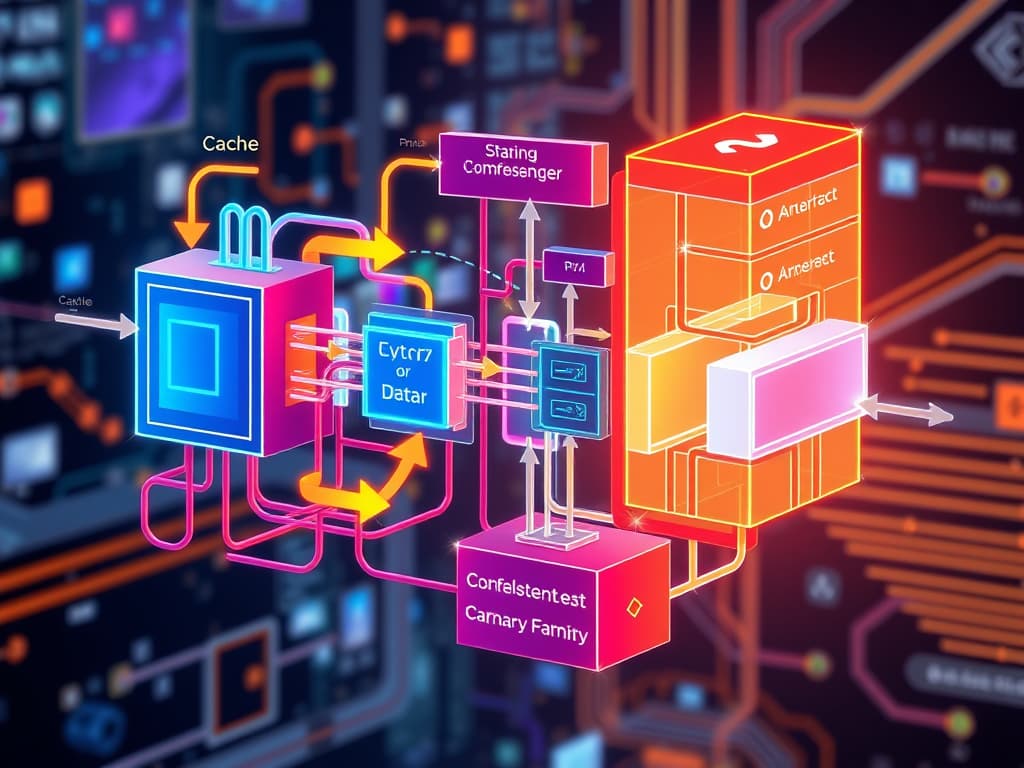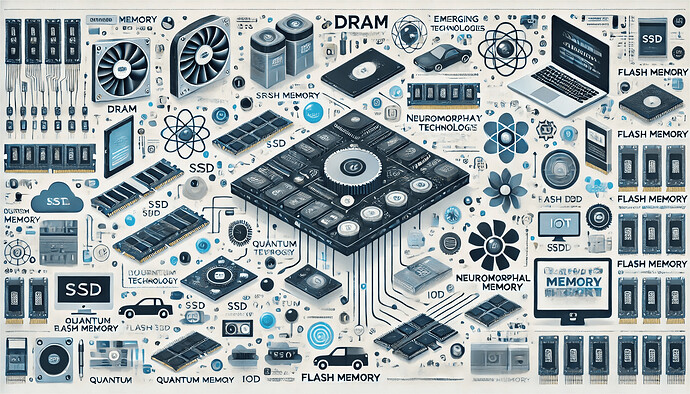Memory coherency is a critical aspect of computer architecture that ensures that multiple processors or cores can access shared data without inconsistency or conflict. In the context of graphics rendering, particularly in modern graphics processing units (GPUs) and multi-core CPU architectures, memory coherency plays a vital role in enhancing performance, efficiency, and the overall rendering process. This article delves into the concept of memory coherency, its importance in graphics rendering, and how it affects various stages of the rendering pipeline.
1. Memory Coherency
1.1 Definition of Memory Coherency
Memory coherency refers to the consistency of shared data in a multiprocessor environment. When multiple processors work concurrently, they may cache data locally for efficiency. Memory coherency ensures that any changes made to shared data by one processor are visible to others in a timely manner. This prevents scenarios where one processor operates on outdated information, leading to inconsistencies and potential errors in calculations.
1.2 Types of Memory Coherency Models
Different architectures implement various memory coherency models, including:
- Strong Consistency: Guarantees that all processors see the same order of reads and writes to shared memory. This model is often easier to program but can be slower due to the overhead of maintaining strict order.
- Weak Consistency: Allows processors to operate on local caches without needing to immediately synchronize with other processors. This model can lead to performance gains but requires careful programming to avoid inconsistencies.
- Release Consistency: A compromise between strong and weak consistency, this model allows for some degree of local caching while ensuring that synchronization points (releases) enforce visibility of changes.
Each of these models has implications for how data is managed and accessed in rendering applications.
2. Importance of Memory Coherency in Graphics Rendering
2.1 Shared Data Access
In graphics rendering, multiple threads often operate simultaneously to process various tasks such as scene rendering, shading, and texture mapping. These threads frequently access shared data, including vertex buffers, textures, and shader programs. Memory coherency ensures that all threads see consistent and up-to-date information, which is crucial for accurate rendering.
2.2 Parallel Processing
Modern GPUs are designed for parallel processing, handling thousands of threads concurrently. Memory coherency allows these threads to work on shared data without conflicting with one another. This ensures that operations like vertex transformations and pixel shading can proceed without waiting for other threads to release data, significantly enhancing rendering performance.
2.3 Reducing Latency
By ensuring that all processors can access the most recent data, memory coherency reduces latency associated with data retrieval. In graphics rendering, where performance is crucial, minimizing latency can lead to smoother frame rates and improved responsiveness in interactive applications.
3. The Graphics Rendering Pipeline and Memory Coherency
The graphics rendering pipeline consists of several stages, each with specific data access patterns that benefit from memory coherency. Understanding these stages helps illustrate how coherency enhances the overall rendering process.
3.1 Vertex Processing
In the vertex processing stage, vertex data is transformed and processed to determine their final positions in screen space. This stage typically involves:
- Vertex Shader Execution: Each vertex is processed in parallel, often using multiple shader cores. Memory coherency ensures that all cores access the same vertex buffer without inconsistencies. If one core updates a vertex attribute (like position or color), other cores must see this update immediately to maintain correctness.
- Transform Feedback: In some applications, transformed vertex data needs to be stored for later use. Memory coherency ensures that this data is consistently available to any thread that requires it.
3.2 Rasterization
During rasterization, the transformed vertices are converted into fragments that correspond to pixels on the screen. This stage benefits from memory coherency in several ways:
- Fragment Shader Execution: Similar to vertex processing, fragment shaders run concurrently on multiple cores. Coherency allows these shaders to access shared data, such as textures and framebuffers, without delay.
- Depth Testing and Blending: These operations often require access to shared resources (like depth buffers). Memory coherency ensures that any updates to these resources by one shader are immediately visible to others, preventing rendering artifacts.
3.3 Texture Mapping
Texture mapping involves applying textures to 3D models, which requires accessing texture data from memory:
- Texture Caching: GPUs often cache texture data for efficiency. Memory coherency ensures that updates to texture data are correctly reflected across all shader units, preventing inconsistencies in how textures are applied.
- Mipmapping: When using mipmaps (precomputed texture arrays at different levels of detail), coherency ensures that shader threads retrieve the correct mipmap level based on the current view distance.
3.4 Post-Processing
Post-processing effects, such as bloom, motion blur, and depth of field, are applied after the main rendering is complete. These effects often require access to intermediate buffers:
- Framebuffer Access: The framebuffer holds the final rendered image. Memory coherency allows multiple threads to read from and write to this buffer without conflicts, ensuring that post-processing effects are applied correctly.
- Shared Resources: Many post-processing effects rely on shared resources like depth buffers and stencil buffers. Memory coherency ensures that changes to these resources are immediately visible, allowing for accurate calculations in post-processing shaders.
4. Performance Optimizations Through Memory Coherency
4.1 Cache Efficiency
Memory coherency enhances cache efficiency by ensuring that all threads can access the most up-to-date data. When data is consistent across caches, it reduces the need for cache invalidation and re-fetching, leading to improved performance.
4.2 Reducing Memory Bandwidth Usage
By maintaining memory coherency, the system can reduce the amount of redundant data transferred between memory and processors. If all threads see consistent data, unnecessary memory accesses can be minimized, lowering the overall bandwidth demand.
4.3 Improved Load Balancing
In scenarios where rendering tasks are dynamically assigned to threads, memory coherency helps maintain load balancing. If one thread updates data that another thread needs, coherency allows for a smoother distribution of tasks, preventing bottlenecks and improving overall throughput.
5. Challenges and Limitations of Memory Coherency
5.1 Complexity of Implementation
Implementing memory coherency in a multi-threaded rendering environment can be complex. Developers must carefully design data structures and access patterns to ensure that all threads can access shared data without conflicts.
5.2 Performance Overhead
While memory coherency enhances performance, it can also introduce overhead. Maintaining coherency requires additional synchronization mechanisms, which can lead to performance penalties if not managed correctly. Developers must strike a balance between ensuring data consistency and minimizing synchronization costs.
5.3 Scalability Issues
As the number of threads increases, the complexity of maintaining memory coherency also increases. High degrees of parallelism can lead to contention for shared resources, resulting in performance degradation. Developers must design systems that can scale effectively without compromising coherency.
6. Future Directions in Memory Coherency for Graphics Rendering
6.1 Emerging Architectures
As graphics architectures evolve, new approaches to memory coherency are being developed. For example, heterogeneous computing architectures, which combine CPUs and GPUs, may require novel coherency models that cater to the unique characteristics of each processing unit.
6.2 AI and Machine Learning
The integration of AI and machine learning into graphics rendering could lead to advancements in memory coherency. AI-driven techniques may optimize data access patterns and predict when data needs to be updated or synchronized, enhancing performance and efficiency.
6.3 Advanced Synchronization Techniques
Future developments in synchronization techniques may provide more efficient ways to maintain memory coherency. Techniques such as lock-free programming and transactional memory could help reduce the overhead associated with traditional synchronization methods.
Conclusion
Memory coherency is a fundamental aspect of modern graphics rendering that significantly enhances performance, accuracy, and efficiency. By ensuring that shared data remains consistent across multiple threads, memory coherency enables the parallel processing capabilities of GPUs and multi-core CPUs, allowing for the creation of complex and immersive graphics in real-time applications.
While challenges remain in implementing and maintaining memory coherency, ongoing advancements in architecture, AI, and synchronization techniques hold the potential to further improve the rendering process. As technology continues to evolve, understanding and optimizing memory coherency will remain essential for developers looking to push the boundaries of graphics rendering.

